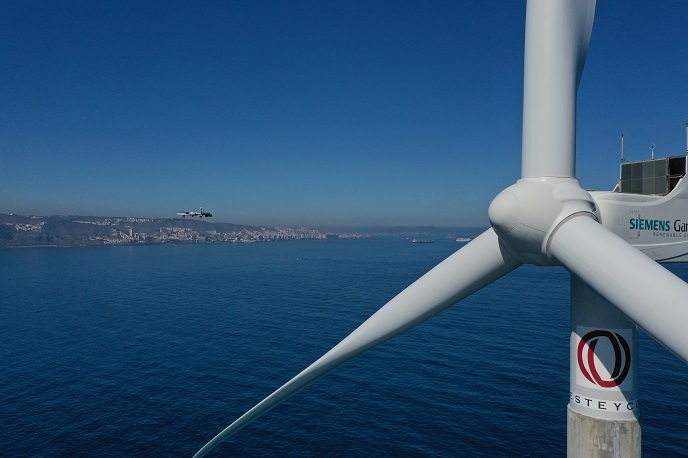The winds of change for wind turbine inspection
Wind turbine inspection is often carried out by specially trained altitude workers using high-rise equipment – a time-consuming, potentially dangerous and costly business. Worldwide, the wind turbine inspection market stands at around EUR 800 million annually, a great opportunity for significant reduction of costs that will have a deep impact in the value chain. Existing drone platforms require constant monitoring in the field and hours of labour for data processing, making inspection tasks strenuous and inefficient. On top of that, inspection results take several days as processing is cloud-based and therefore not real-time.
The WEGOOI drone inspector takes to the air
The EU-funded WEGOOI project has developed an autonomous wind turbine inspection drone for both onshore and offshore platforms. As project coordinator and CEO of host company Alerion Technologies, Oier Penagaricano emphasises: “The drone is able to perform the inspection in under 15 minutes while keeping the structure at all times centred in the image.” WEGOOI has developed software to expand the drone’s navigation trajectory or path to take in all three blades from four sides in a single flight. For landing, the update allows landing on a moving boat, important for offshore inspections. The result is efficient, high-quality inspections that are fully autonomous and identify potential damages in real time. Not only that but accidents for inspection staff are eliminated. Originally planned for the North Sea in Denmark and the Netherlands, the demo flights became severely limited with COVID restrictions. “After a few futile attempts, we were finally able to do a demo in the Canary Islands. However, the only wind turbine in Spain is near an airport and a military base, requiring months of paperwork to show the drone was safe to fly in such areas,” relates Penagaricano.
Next flights scheduled for WEGOOI
Future work will industrialise the WEGOOI platform from prototype to product and expand the business, especially offshore. “The software part of the platform is ready, but the hardware part needs to be built to maritime environment standards for a robust product operational in the wind farm all year round,” Penagaricano points out. The goal is to make offshore inspections efficient and fully automated, significantly bringing costs down to half that of other drone platforms. “As a business, we are also working on the digitalisation of wind turbines to increase energy production and reduce maintenance costs,” he adds. With this, they will be offering inspection services combined with an in-house developed AI platform for damage assessment. Penagaricano sums up: “I think it's important to note that we have taken a different approach compared with most companies, as we have decided to build our drone software and hardware from the ground up, with local talent.” The project has also sourced most of its sensors and components from Europe (with only some from the United States). This has resulted in a longer path travelled, but the outcome is a one-of-its-kind drone all designed, developed, built, and operated from Spain.
Keywords
WEGOOI, inspection, drone, wind turbine, software, offshore, onshore

